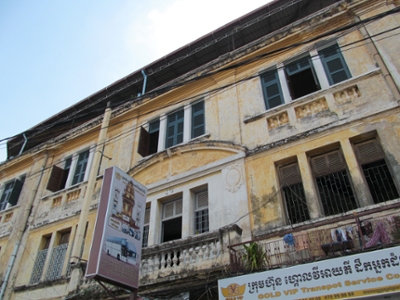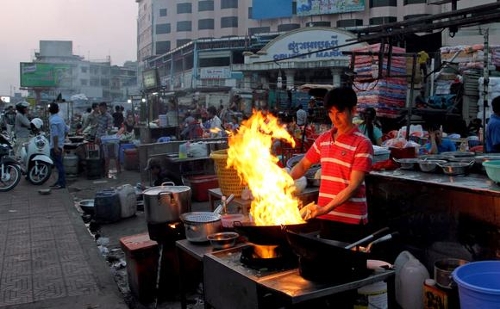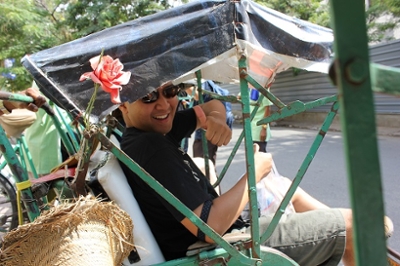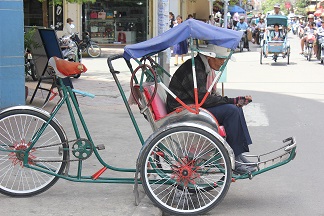Poetry, opera, and architecture in and around Phnom Penh
I’ve finished my legal briefing on Cambodia’s rubber plantations, and I will be presenting my findings next Friday at a panel discussion with three attorneys in Phnom Penh. One is the Chief of Party at EWMI, another is a professor at the Royal University of Law and Economics, and the other specializes in labor law in Cambodia and is the Bar Liaison for EWMI. Although anxious to present for the first time as a legal intern, I believe that this is a great opportunity to share what I’ve learned so far and receive feedback on how to move forward with my research.
I have also been assigned to research and create another briefing on the country’s extractive industries. I will focus primarily on the laws and industry policies behind mining activities, mineral products and commodities, and oil and gas blocks. Even though I am not familiar with these areas of the law, I will be working closely with ODC’s director, who is also the coordinator of the National Network on Extractive Industry Social and Environmental Impacts (EISEI). He has worked with indigenous communities, community-based organizations and NGOs in order to improve natural resource management in Cambodia. He is also an attorney, so I look forward to learning more about the differences and similarities between American and Khmer legal education.
In addition to legal research, I have been performing editorial work on ODC’s various databases. ODC maintains up-to-date, company profiles on all the domestic and international investors in the mining, oil and gas, hydropower, and ELC-backed industries. We, the ODC editors and legal interns, are currently reviewing all the ELC developers in the country and updating company name changes, their types of production, the amount of hectares per ELC, and director names. Here’s the current ELC database so far.
Although it can be tedious work sifting through a variety of government documents in different languages, I enjoy working closely with my Khmer colleagues throughout the editing process. I’m fascinated about their different backgrounds and hearing stories about their lives. In fact, I’m slowly trying to learn the language to better communicate with them; but it’s been an uphill battle so far, especially with my pronunciation!
Here are a few words and phrases I’ve picked up, but please note that these are just my own phonetic estimations and should not be considered exact!
Knyom chumua (My name is…)
Tlai na (Too expensive) (I quickly learned this one because you MUST bargain here!)
Plai (Vegetable)
Ma-hope (Food)
Ma-hope buah (Vegetarian)
Som kit loi (May I have the bill)
Som chop (Please stop)
Som bot twang (Please turn left)
Som bot sdam (Please turn right)
Truong (Straight ahead)
Pman (How much)
Cho-chet (To like)
Ot (To negate)
Ah-eh-te (No problem)
Nung (And)
By (Rice)
Mie (Noodles)
Psych-o (Beef)
Psych-muan (Chicken)
Psych-chrouk (Pork)
Tre (Fish)
Kdao (Hot)
Soun (0)
Mouy (1)
Bi (2)
Bei (3)
Buon (4)
Pram (5)
Pram muoy (6)
Pram bi (7)
Pram bei (8)
Pram buon (9)
Dap (10)
Dap muoy (11)
Mpei (20)
On top of work, I’ve been enjoying the many artistic events ongoing in Phnom Penh. I attended my first open-mic poetry night at a place called Java Café. We heard short stories, poems, haikus, and personal reflections in different languages from both expats and locals. The founder of the event, Greg, was a former intern at ODC and created it to help talented Khmer youth express themselves through art since it is often discouraged in the culture. I had a great time and, if I can summon enough courage, I’ll try to recite during next month’s open-mic.
Last weekend, Liz and I went on a 3-hour architecture tour. I learned how French, Chinese, and traditional Khmer architecture are still present today throughout the city. In fact, we toured a part of the city that seemed to transport us to a Mediterranean city on the south of France.


But moments later, we were seemingly relocated to another continent as we entered Phnom Penh’s China Town.

Perhaps my favorite moments of the tour were when we rode on richshaws, or tricycles with passenger cabs. Our tour group received perplexed stares from the locals, but it was well-worth it!

This weekend, my colleagues at ODC and I enjoyed a Khmer opera. The title was “A Bend in the River,” and it was performed by the Sophiline Arts Ensemble, an internationally renowned classical dance and music company. The opera was inspired by a traditional folktale that explores issues of morality, love, trauma, and acceptance. I am not familiar with operas, but what I saw was simply breathtaking. The storyline, choreography, lighting, and acting were all magnificent and we were lucky to witness the stunning 2 hour performance. There was a Q&A session after the play and we learned about the current status of Khmer opera. The director, Sophiline Cheam Shapiro, is at the forefront of Cambodian dance and has won numerous awards (such as a National Heritage Fellowship and Nikkei Asia Prize for Culture). She talked about how the play manifests both contemporary and traditional aspects of Khmer dance. She advocates for harmony, not a division, between the two. We also heard from the head composer, and designer of the play. It was a wonderful night that has made me appreciate Khmer art and culture even more!
